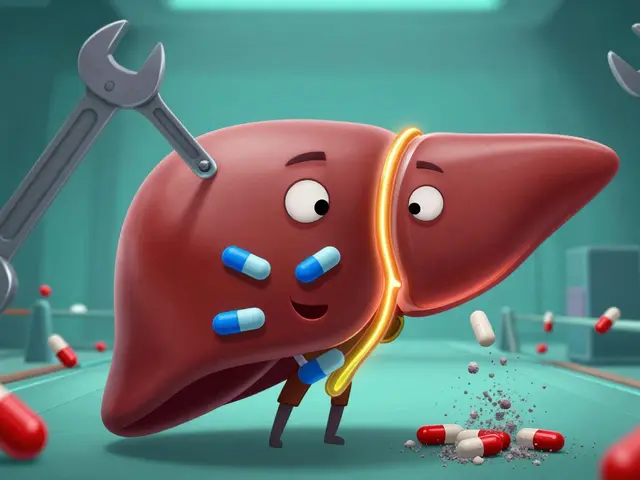Synthroid Alternatives: 7 Practical Options for Thyroid Management (Oct 2024)
You read a fresh, solid guide this month on real alternatives to Synthroid for hypothyroidism. The post breaks down seven choices — both prescription and natural — and compares how they work, what to watch for, and who might benefit most. If Synthroid (levothyroxine) hasn’t fit your needs, the article helps you see other paths without the marketing noise.
What the article covers
The piece lists seven alternatives and explains each one clearly: other levothyroxine brands (Levoxyl, Tirosint), liothyronine (T3), combination T4/T3 therapy, natural desiccated thyroid (NDT) like Armour, compounded bioidentical options, and lifestyle or supplement strategies that can support thyroid function. For each option you get pros and cons, likely side effects, and practical points like dosing differences and monitoring needs. It even includes a comparison table so you can scan differences fast.
One straight fact to remember: levothyroxine replacement is still the standard for most people with hypothyroidism, but not everyone feels fully well on it. The article explains common reasons why — absorption problems, persistent symptoms despite normal labs, or preference for T3-containing therapy — and maps alternatives to those situations.
How to use this info
Start by matching the option to your situation. If you have trouble absorbing pills because of calcium, iron, or gut issues, a liquid or capsule like Tirosint might help. If you have ongoing fatigue despite normal TSH, a trial of low-dose T3 or combination therapy under close supervision could be discussed. If you prefer fewer synthetic ingredients, NDT is an option but requires more frequent monitoring and can cause fluctuating hormone levels.
The article stresses safety: never switch medications or adjust doses without your clinician’s guidance. Monitoring TSH, free T4 and sometimes free T3 is key after any change. It also flags special cases — pregnancy, heart disease, and older adults — where choices and doses differ. Practical tips cover timing (take thyroid meds on an empty stomach), interactions (antacids, supplements), and when to test labs after a change (usually 6–8 weeks).
If you want quick takeaways: consider formulation changes first (different brand or formulation), then discuss combination or T3 options if symptoms persist, and use NDT only with clear monitoring. The full post from October 2024 gives a side-by-side chart, dose examples, and a checklist of questions to bring to your provider.
Want to read the full breakdown and comparison table? Check the October post for detailed pros, cons, and real-world tips to discuss with your doctor. This month’s coverage aims to make the choices clearer so you can have a focused talk with your clinician and get back to feeling better.

Top Zithromax Alternatives to Consider in 2024
In 2024, individuals seeking alternatives to Zithromax have several effective options at their disposal. This article explores nine alternative antibiotics, including Amoxicillin, Augmentin, and Doxycycline, each with their unique pros and cons. Learn about the range of infections these alternatives can treat and consider factors such as availability, forms, and potential side effects. Explore which antibiotic might be a suitable choice for specific bacterial infections based on the latest medical insights.

7 Best Alternatives to Synthroid in 2024 for Thyroid Management
Exploring different treatment options for hypothyroidism can be beneficial for patients seeking alternatives to Synthroid. This article provides an in-depth look at seven alternatives, including natural and synthetic options. Readers will find detailed information on each alternative's benefits and drawbacks, helping them make informed decisions. The article also includes a summary table for easy comparison, aiding in the understanding of the diverse options available in 2024.
Categories
- Medications (50)
- Health and Medicine (47)
- Health and Wellness (34)
- Online Pharmacy Guides (15)
- Nutrition and Supplements (7)
- Parenting and Family (3)
- Environment and Conservation (2)
- healthcare (2)
- prescription savings (1)



